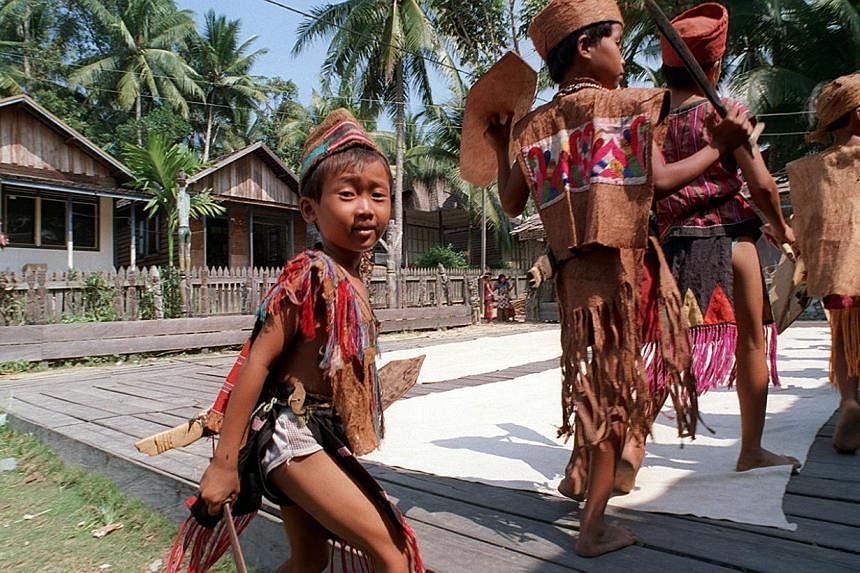It is a question that may strike some as being somewhat simple: Where is Asean? However, the simplicity belies a deeper and more complex line of inquiry.
In reply, someone may simply pick up a map and point to the region designated as South-east Asia, and say, "There is where Asean is located".
But is it? This leads us to ask: What is Asean?
Over the last few decades, the Association of South-east Asian Nations - as a multi-state pact of nation-states - has proven itself successful in many respects, from the prevention of war in South-east Asia to dealing with complex multilateral issues, ranging from cross-border pollution to the movement of Asean citizens to smuggling and terrorism.
These achievements, however, may pale in comparison to what may follow from next year, with the creation of the Asean Economic Community (AEC), a move that will bring about greater economic integration and cooperation.
As far as knowledge of the AEC is concerned, it would appear that not all the countries of Asean are equally prepared.
However, since 2012, Indonesia has begun to invest in think-tanks, departments and research centres in universities to promote the idea of Asean and the AEC, with one such being the newly minted Asean Studies Centre at the faculty of politics and social sciences at Gajah Mada University in Yogyakarta, Central Java.
These centres have been set up "to socialise", or popularise, the concept of Asean and the AEC, in preparation for the changes ahead.
The Asean Studies Centre at Yogyakarta has conducted public awareness campaigns among workers and members of the public to inform them further about the importance of Asean and what the AEC can do for them.
Here lies the answer to "Where is Asean?"
For surely Asean - as a complex abstract idea - cannot simply lie in the buildings and institutions associated with its work, impressive though those buildings may be architecturally.
Complex ideas are not things that are embodied in non-sentient monuments, but rather embedded in the collective socio-psychological architecture of societies. Asean may be symbolised by objects like buildings, flags and logos, but as an idea, it is carried in the hearts and minds of people.
Giving life to an idea
SO WHAT would make Asean something real, and less of an abstract concept to people across South-east Asia?
Here we need to distinguish two processes: While Asean integration has been happening on a multi-state level, driven by governments and capital, centuries before Asean was even concocted, there was already the longer history of South-east Asian integration and social movement.
The latter is still evident today. Across many parts of South-east Asia, ordinary people continue to live as their ancestors have always done: Field-working researchers will tell you that in the waters of the region, nomadic itinerant communities like the Bajao Laut sea nomads still move across the archipelago with ease, and are spread across Indonesia, Malaysia and the Philippines.
Communities, such as the Dayaks of Borneo, straddle the political frontiers of both Indonesia and Malaysia, as do many cross-border communities in other parts of mainland South-east Asia.
When we speak about the "global age" of "cosmopolitan citizens", we tend to focus more on urbanised elite communities, but we forget that along the border zones of the entire region, there remain communities who are hybrid, polyglot, who have multiple identities and who are just as comfortable with the reality of living in complex plural environments.
For millions of South-east Asians like them, the prospect of living in an integrated AEC is hardly new: Many of them already cross borders on a daily basis, and sometimes without passports or identity papers.
It is here that the connection has to be made, between the abstract idea of Asean integration and the realities of people who live in a South-east Asia that is intertwined and inter-connected. When bodies such as the Asean Studies Centre of Yogyakarta try to socialise the idea of Asean among ordinary Indonesians, they are rooting that abstract legal-political concept in the lived experience of people who will soon feel the impact of Asean economic integration, but who do not have the vocabulary to express it.
It provides them with the language and the means to understand the impact of multilateral arrangements upon their personal lives, and allows them to take part in that process and claim some ownership of it.
The reasons why this is so important at this stage are twofold:
The concept of a common home
FIRST, in order to give societies the means to appreciate and understand the processes of change as a result of closer Asean cooperation and integration, and to buffer against the possibility of a hyper-nationalist reaction against that process - should the inflow of capital and other influences from neighbouring countries be seen as "foreign" or "predatory".
Second, to remind South-east Asians that living in an Asean economic community that is more inter-connected and inter-dependent is not a new or threatening thing, but in line with the history of movement, migration and investment in the region for hundreds of years.
Yet, many of us still do not know one another well enough: A glance at history textbooks used across the region will show that young South-east Asians may know more about the French Revolution or World War II than the history of the country next to theirs.
With the AEC almost upon us, the need to socialise and popularise the concept of Asean - and the notion of a collective belonging to South-east Asia as the common home to all in the region - is greater than ever before.
This has to be a comprehensive effort which extends beyond legislatures and debating chambers, and must reach the schools, streets and living rooms of the 600 million people who inhabit this part of the world.
And the end goal has to be the situation where the answer to "Where is Asean?" is "in me, and all of us". For no amount of concrete or monuments can give life to Asean identity unless there are Asean-minded people who see the region as their home in the first place.
The writer is an associate professor at the S. Rajaratnam School of International Studies, Nanyang Technological University.
S.E.A. View is a weekly column on South-east Asian affairs


